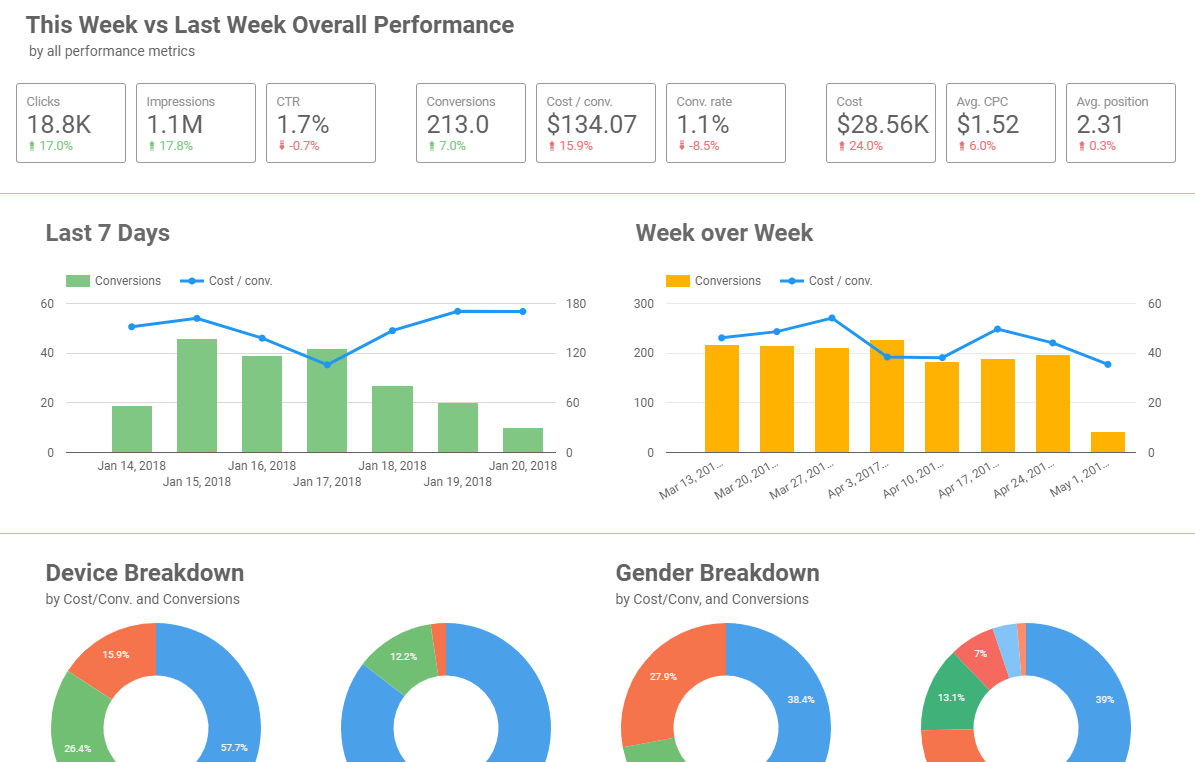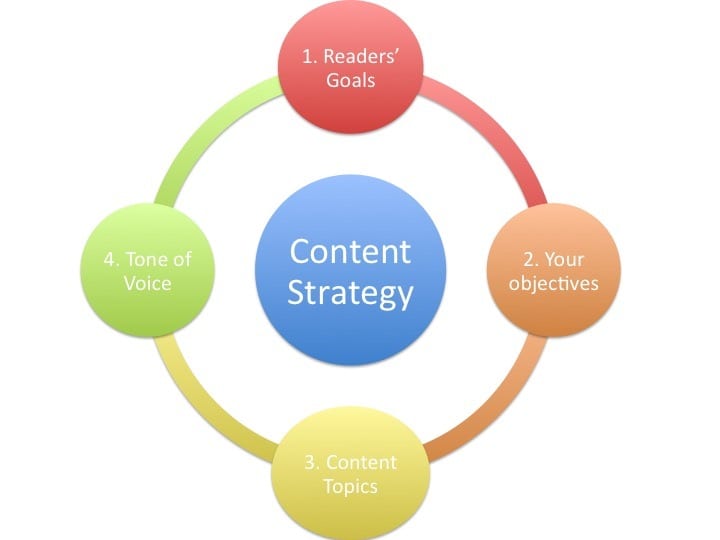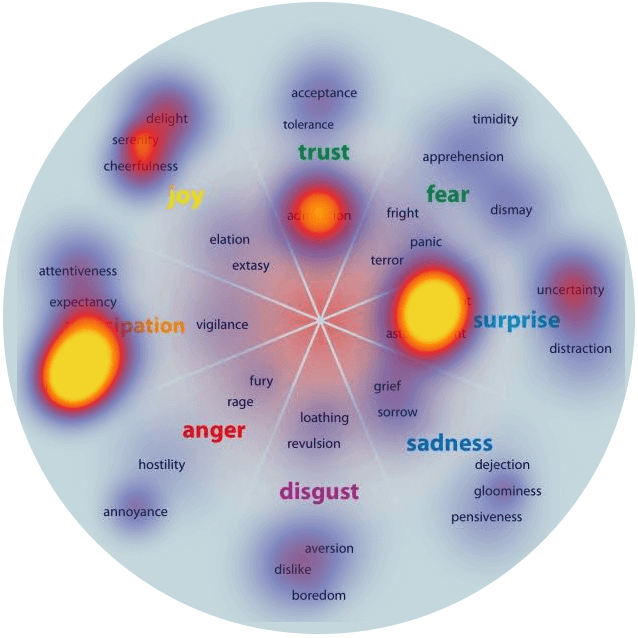How To Base your Marketing Decisions on Gathered Data
Has it happened to you to get a cool idea that ends up making things worse for your website? Regardless of whether your intention is to increase your traffic, optimise for conversions, or simply nudge your audience in a certain direction, there are tons of ways to do it, and it all starts with data. […]

Has it happened to you to get a cool idea that ends up making things worse for your website? Regardless of whether your intention is to increase your traffic, optimise for conversions, or simply nudge your audience in a certain direction, there are tons of ways to do it, and it all starts with data.
More often than not, the right decision is to rely on data and not intuition in order to reach a good decision. Let’s see what this process looks like and where you can make the most out of the data you’ve already gathered.
How to use website data to improve your copy

The easiest way to get traffic is usually by placing ads. But by doing that you often lead people where they aren’t supposed to be in the first place. If you are leading visitors to a non-optimised web page, they are very likely to bounce off, regardless of whether you paid for them to be there or not.
A/B Testing
Like in the image shown above, A/B testing, multivariate testing or split-testing can help you improve your copy even on the micro-level.
With A/B testing not only will you gather real-time data, but it will also answer your questions instead of you having to make a decision. There are still some traps here like having a statistically relevant sample size and testing the right things.
Potential things that you can test on your website with A/B testing include:
- The copy
- Headlines
- Images
- CTAs (Calls to action), and that includes their location, button colour, text, etc.
- Buttons
- Menus
- Backgrounds
If you’ve already been running Google ads, make sure to check out your variations there, and grab the best performing headline. If it works there, it will also work on your landing. And if they both match, it’s even better for your visitors, and the trust levels you are building together.
A disparity heading between the headings of a landing page and the advertisement that lead there is a very common reason for visitors to bounce off from your website.
You can make the most out of PPC (Pay per click) data and analyze why are some of your visitors coming from there bouncing off when they reach your website.
Quality Score

In most cases with PPC advertising, you either pay a lot for a high competition keyword, or less for a lower volume one. Since everyone is on a budget, we often tend to go for industry-specific keywords that eventually decrease our QS (quality score).
In order to avoid a drop in QS, make sure to make the landing pages as relevant as possible to the ads and their placements. For example, if you’ve chosen to compete for a lower volume less relevant keyword, include a heading that matches the ad’s keyword on your landing.
Another way to go is to personalize each ad’s landing page.
PPC Data

There are also other parameters that you can monitor here and with their help improve:
- Your landing’s conversion rate.
- The landing’s bounce rate.
- Find better audiences, that are way more relevant to your website.
And while such a redesign might sound like too much for you, if you are constantly running google ads or display ads, then, in the long run, a small increase in engagement and conversion rate would result in a better return on investment.
Make your data accurate
In order to make accurate and strategic marketing decisions, you need accurate data. And while you are certain that yours is, you can increase the level of precision you are operating on.
This can be done by installing filters. There are many data sources that you may use such as:
- YouTube Studio Channel Data
- Social Media data (Facebook, Instagram, Linked In, Twitter, etc.)
- Website Data
- Google Analytics
- Google Ads (PPC, Display, Video)
Use Filters

Before you hop on to use filters, make sure you are using segmented views to observe the data. This can sometimes eliminate the need to install a filter to your view.
On the other hand, you should also keep unfiltered views intact and separate. Sometimes, you will spot trends, or get an insight from them that you usually wouldn’t from filtered views.
All of the data and traffic sources mentioned above can be contaminated by the same things, which you should filter in all decision making. These are:
- Subdirectories entanglement. If you have several parts on a website, like a blog, a few landings, and a homepage, then make sure to analyse them separately. Don’t put the data in one report.
- Internal traffic skewers statistics. Imagine you are doing a test, and you have a large team of users constantly visiting the website. They can easily skewer the statistic by acting by habit. This one can easily be fixed by removing all your IP addresses from the data.
- Optimise reports for reading. Impossible to read identifiers that can slow down your team significantly, should be replaced and explained in a way so that everyone understands them.
- Capitalisation. On most platforms like Google Analytics, lowercase and uppercase symbols count as different ones. And pop in different reports. this can be fixed with a simple filter.
Improve your products with the help of data

Regardless of the field in which your business operates in, the product development team heavily relies on customer feedback and experience regarding any future improvements.
Focus groups, testing, surveys, and feedback are just some of the ways you could use here to get relevant data and insights regarding improvements.
Google Ads Data can guide your product development
But there are many other, much less resource-demanding ways to get similar data. One of them is the Google ads, keyword planner. Although this one can’t really help you improve your current product, it can steer you in the right direction or niche to run your next one.
For example, a pet supplies manufacturer could see relevant search results in the relevant niche and get a better idea of what their potential clients are looking for.
How to do it
- Open Google Ads, go to the Keywords planner tool and type in a keyword that is relatively broad, but has performed well for your business over a prolonged period. Following the example given above, if you are a pet goods manufacturer, you could use the term “cat toys”, or “dog toys”.
- Once you’ve chosen the keyword, you need to filter the results. Remove all unnecessary information like brands, gender or products that are too broad like “cat drinking fountains”, if you want to specialize in toys.
- The next thing to do is look at the monthly search volume and competition. Moreover, here you would also see an average CPC (cost per click) for each position. This way, you’ll know how costly it would be to advertise such a product with average success.
- Make a table in a spreadsheet and compare alternatives.
Once you’ve done these steps, the next best thing to do after choosing the product niche is to research your competition. Get a good idea of how much production costs would amount to and get a good grasp of an average estimated cost per sale which includes your advertising budget per item.
Have in mind that a large portion of businesses fail because their advertising budget is too low. Or haven’t calculated an average acquisition cost per item.
If you’ve chosen the right product, the next steps are to devise a good digital marketing strategy. Good digital approaches often rely on three things.
- Amazing content
- Social media marketing campaigns and influence
- Organic reach
Let’s start with the first one.
1. How to base your content marketing strategy on data

Have you noticed how some ad copies get a much higher click-through rate than others? Many businesses make the mistake of not analyzing the outliers.
Getting the statistics from your outstanding ads can help you get a better idea of what might work as a landing page. Sometimes using tools like SEMrush or Ahrefs isn’t the best option.
The main reason is that a certain search phrase might get higher traffic but could eventually lead to a lower impressions count, a much higher bounce rate, and a decreased conversion rate.
And this isn’t good for any business model.
Use keywords to create content
Are you running a blog? Spot the spikes in trends in google trends, or in your keyword planner. You could also use the CPC data from your campaigns, as these give personally tailored insights.
Once you’ve seen a relevant keyword to your website, and it has enough traffic to target, make your research for supplementary keywords.
While people search for a toy, they often go for exact phrases like “Tiger toy for toddlers”. Get to know all the options of the product or topic you are writing about.
And this type of content creation is not limited to blogs or landing pages. The YouTube algorithm always listens to the content of the videos, and sometimes suggests youtube videos in google search, even if they lack the platform optimisation or keywords.
Content Repurposing
Also, familiarise yourself with content repurposing, which is one of the highest ROI (return on investment) marketing tools in the age of AI. Read our article on content repurposing here.
Types of content to create:
- Blog posts
- Banners
- Videos
- Podcasts
- Presentations
- Social media posts (Linked In advice posts, Instagram collages)
- Social Media Stories, social media shorts (Tik Tok, YouTube Shorts)
2. How to optimise a social media marketing campaign

Social media is a phenomenon that allows brands to stuff down content in the perception of users without them even searching for it.
While paid search and organic traffic usually bring in warm or hot leads, social media followers can be so distracted and impulsive they often don’t know what they follow.
In order to stand out in the endless sea of social media posts four very important marketing decisions have to be made and based on data. These are:
- What are you giving your audience?
- Why is this content what would work best?
- When is the best time for your posting schedule?
- Where are your most desired placement options?
- Who are you targeting?
What? We’ve already answered “the what” in the “How to base your content marketing strategy on data” part of the article. The 2nd question is fairly easy to answer if you already have data.
Why? Check your social media analytics in all channels and see what has worked in the past and what hasn’t. Don’t make the mistake to compare posts and promotions optimised for conversions with such optimised for impressions. Divide things and compare them separately.
When? How often should you post? Experiment. Look at your past data and analyse it. Each timezone and niche has a specific best time to post. Even communities within communities can be monitored. There are tools that monitor Facebook groups or Reddit subreddits and can inform you on what the best posting time is for each platform. There are even free tools like Delay for reddit.
Where? You have resources. And sometimes spending them in the wrong place can lead to total burnout and demotivation. Make the research of what is the most cost-efficient way of reaching your audience. Targetting baby boomers on Tik-Tok is ridiculous while searching for Generation Z audiences on LinkedIn would also be a bummer.
Who? The same applies here. Go through the demographics of the platforms you are using. Are you resonating the most with older people? If so, use bigger fonts in your print, landing pages, etc. If you are resonating more with younger people, learn how to increase their engagement rate, which is usually hard to get due to their shorter attention span.
3. Increase Your Social Media Organic Reach With Analysis

After Facebook’s recent updates in the past couple of years, it became obvious that the platform prefers businesses to rely more on paid campaigns. On the other hand, exploiting a few factors can ensure that your content eventually becomes viral and reaches the right audience.
The most important of these is utilising your audience’s emotions.
If you already have CPC data, and you’ve seen a great performance in a few keywords, why don’t you try to optimise your website to squeeze in some organic traffic and rank for the same keywords?
Your organic reach can be extended on both search engines and social media. In social media, that counts for followers and shares.
On social media like Facebook, the most common ways of increasing your organic reach in 2021 going into 2022 are:
- Try various formats when posting. Some people swipe through stories, while others watch videos, and third ones scroll in the newsfeed. In order to reach all, you must experiment with the formats that social media like Facebook offers.
- Try Live Streaming. Some people on social media prefer live interactions. Not only would your audience be able to chat, but they would also be giving you real-time feedback.
- Invest in visuals. With each year, businesses realise how important social media content is, and things get competitive. Invest in a good designer and use eye-catching videos and graphics. Did you know that image posts get twice the engagement text posts to achieve on Facebook?
- Study Emotions. Associate each post with an emotion. (Surprise, anger, love, etc.) and make a table. Post at least 20 posts from each graph and see which ones perform best with your audience. An exemplary chart can be seen below.

Conclusion
Regardless of the tons of data, small business owners have already gathered, everyone eventually acts on a nudge. While this can lead to alternating results, it is a leap of faith, some businesses can’t afford to make.
Base your decisions on the data you have already gathered in CPC campaigns, conversion rates, and audience insights. Since you have it stored, it is already there and is entirely free of charge for you to use.

